Kagoshima is a sunny city at the southernmost tip of Kyushu mirroring the warmth and charm of Italy’s Naples with its mild climate and streets lined with palm trees. The top attraction here is the incredible Mount Sakurajima, reminiscent of Vesuvius.
Mount Sakurajima is one of Japan’s most active volcanos, which has frequent minor eruptions. It’s a common sight to see Sakurajima emitting smoke every day, which is part of the reason so many people come to see it in Kagoshima.
If you’re a history buff, you’ll definitely appreciate Kagoshima as it was once the home base of the powerful Shimazu clan, who played a big role in the Meiji Restoration.
Beyond the main attractions in the city itself, Kagoshima also serves as a gateway to some of Japan’s most picturesque landscapes and islands like Yakushima and Amami Oshima.
I recently visited Kagoshima with my husband, to escape some of the winter cold in Tokyo, as seeing Sakurajima has been on my must-visit list for many years. With this guide, I aim to share the essence of Kagoshima, helping you uncover the city’s best experiences. From my recent visit, I’ve gathered all you need to know about Kagoshima, making every moment count.
Table of Contents
- How to get to Kagoshima
- Safety Tips for Kagoshima
- Mount Sakurajima
- Shiroyama Park Observation Deck
- Yunohira Observatory
- Sakurajima Yogan Nagisa Park Footbath
- Tenmonkan
- CenTerrace Tenmonkan
- Sengan-en
- Iso Beach
- Statue of Okubo Toshimichi (Lyons Park)
- Yoshino Park
- Amino-no Sato
- Kagoshima Chuo Station (Amu Plaza Kagoshima)
- Places to visit near Kagoshima
- Ibusuki
- Yakushima
- Kirishima National Park
- Okinawa
- When to visit Kagoshima
- Where to stay in Kagoshima
- Final thoughts on Kagoshima
- Frequently Asked Questions
How to get to Kagoshima
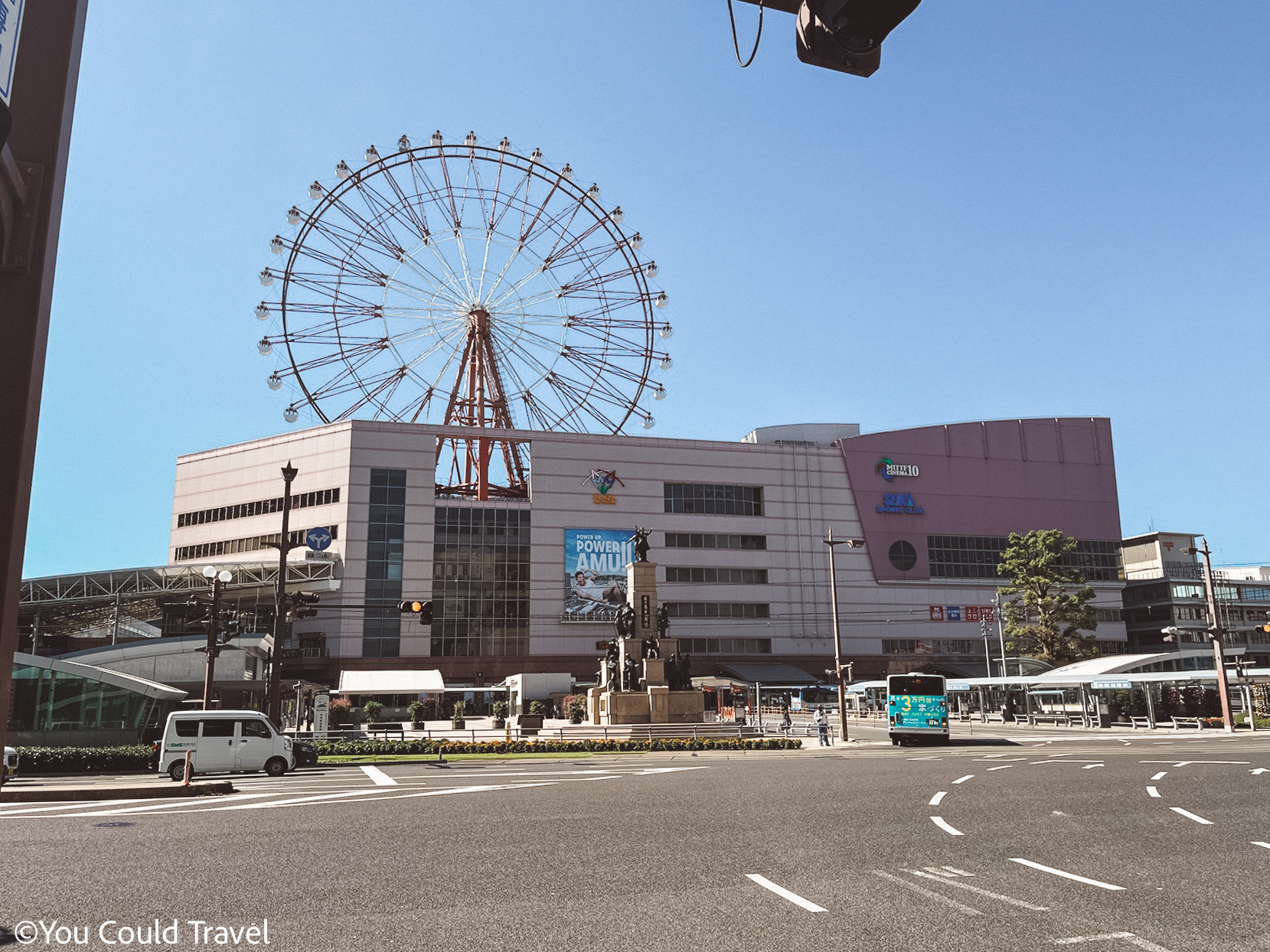
Kagoshima is served by the shinkansen and can be accessed (fast!) from any Japanese major city.
The most popular option for visitors is to usually visit Kagoshima for 1-2 days as a trip from Fukuoka. On the Kyushu Shinkansen, it takes 80 minutes to reach Kagoshima Station from Hakata Station.
From Hiroshima Station, it takes 2 hours and 30 minutes on the Tokaido-Sanyo Shinkansen to reach Kagoshima.
If you’re feeling adventurous and want to travel to Kagoshima all the way from Tokyo, know that it is more than possible and considering the distance (1400 km), I would say it’s surprisingly fast. It takes approximately 7 hours on the Tokaido-Sanyo Shinkansen line to reach Kagoshima from Tokyo. Your trip will be covered by the JR Pass.
Kagoshima can also be accessed by plane. It takes just under 2 hours to fly from Tokyo to Kagoshima and there are around 20 flights a day (yes, that’s correct), with prices ranging between $100-400 per ticket.
Safety Tips for Kagoshima
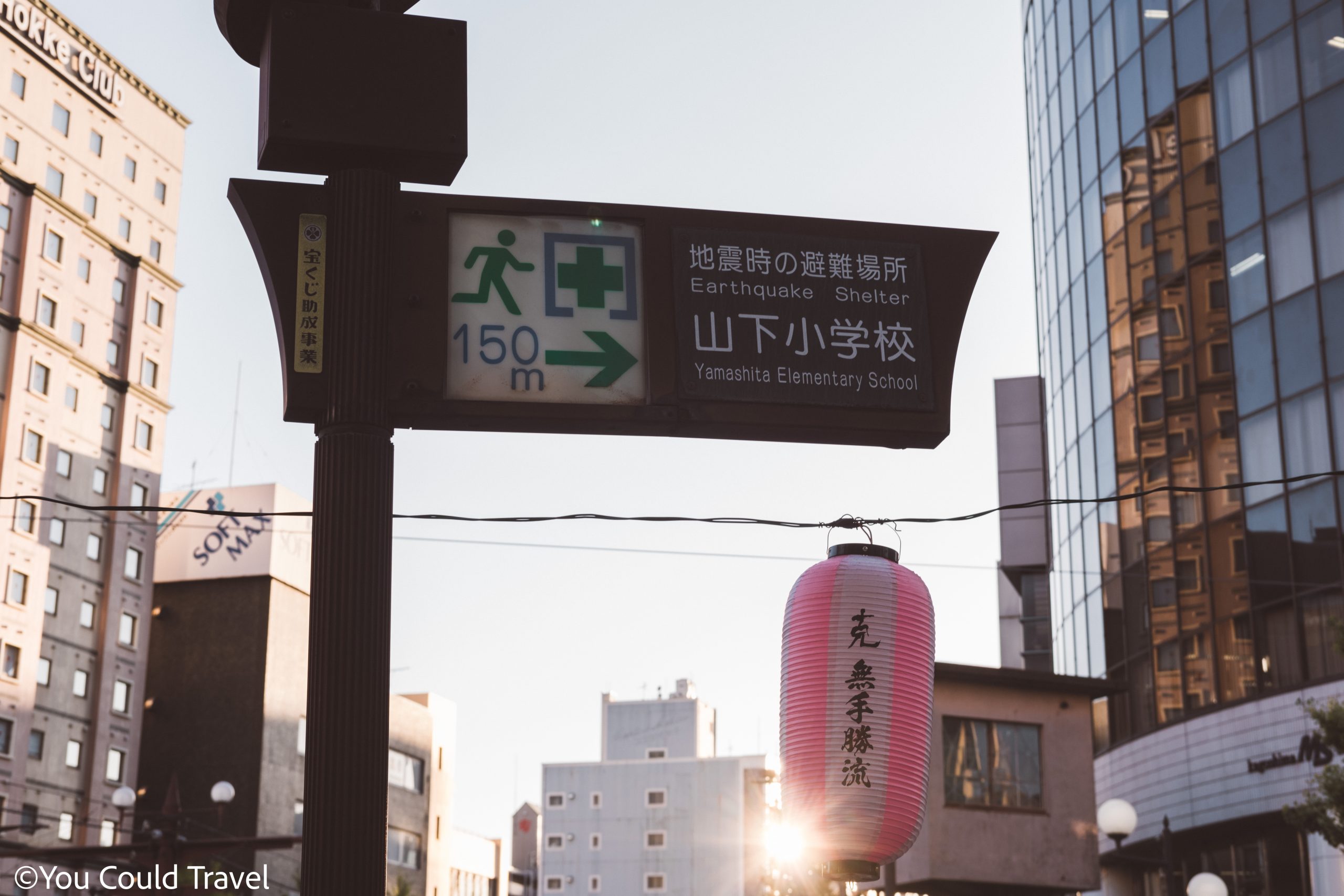
Visiting Kagoshima is generally very safe but given its proximity to an active volcano, you’ll want to come prepared.
Sakurajima is an active volcano. Stay informed about its activity and follow any advisories or evacuation orders from local authorities. I recommend downloading the Safety Tips app for the latest information on natural disasters. There are evacuation areas and shelters almost everywhere in Kagoshima. Just always take stock of your surroundings.
Kagoshima is very sunny (which is awesome!). Use sunscreen, wear hats, and stay hydrated to avoid sunburn and heatstroke.
When hiking in Kirishima National Park or other natural areas, stick to marked trails, wear appropriate footwear, and carry sufficient water and snacks.
If visiting onsen or sand baths like those in Ibusuki, follow local etiquette and safety guidelines, such as not staying in hot water too long to avoid overheating.
Mount Sakurajima
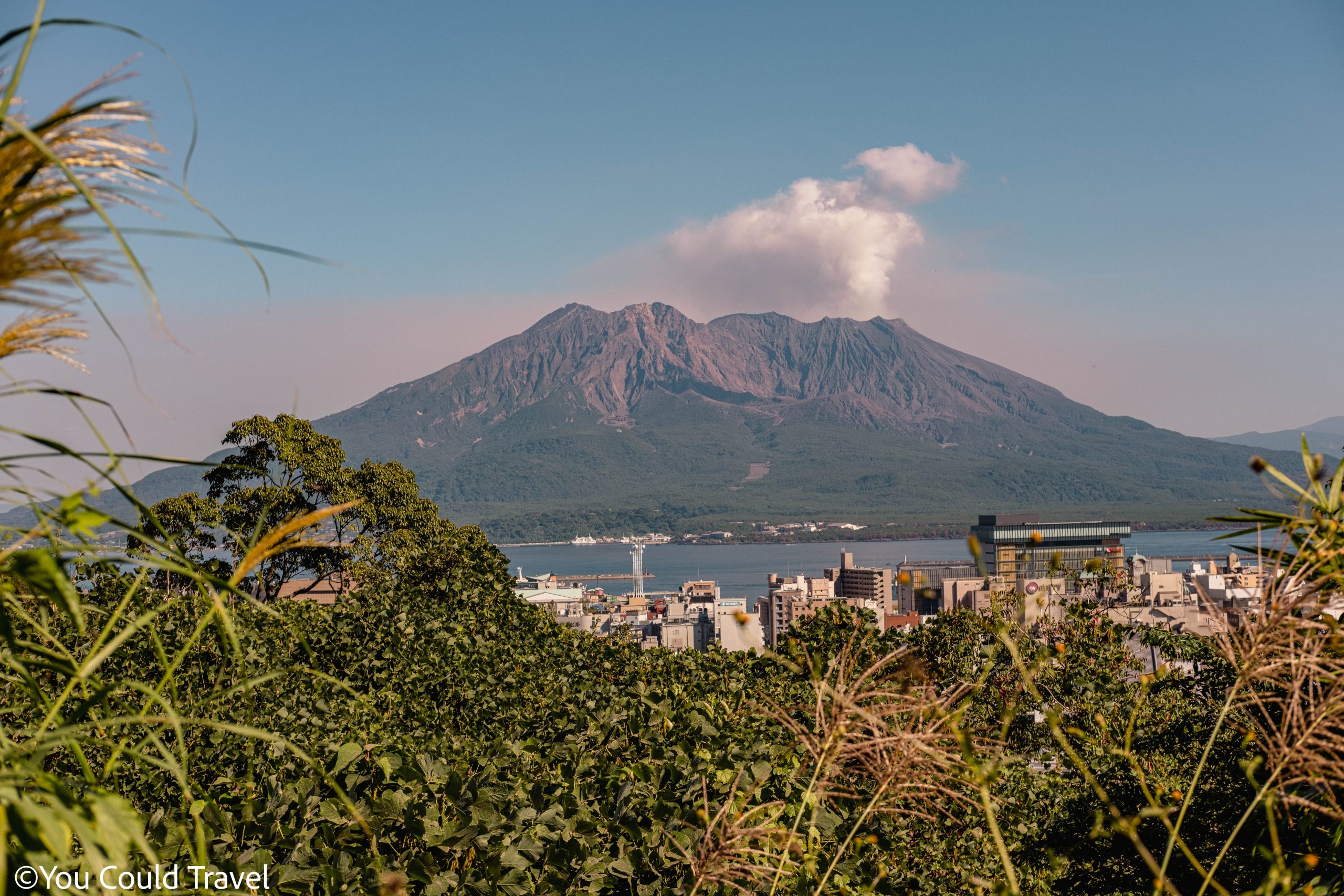
The main reason to visit Kagoshima is to see the incredible Mount Sakurajima. It’s one of Japan’s most active volcanos, and it’s very common to see it emit plumes of smoke every day. In fact, everywhere you are in Kagoshima, you can see residue from the volcanic ash.
There are several points dotted throughout the city from where you can see and photograph Mount Sakurajima, but the Shiroyama Park Observation Deck is, in my opinion, the best and most accessible. From the observation deck, you get to see Mount Sakurajima in all its splendour, but also the rooftops of Kagoshima city.
There are many locals who make the hike to the observation deck every single day, partly because they love the view and partly because, we’re told, it’s good exercise. There are not as many tourists in Kagoshima as before the pandemic, so it’s not uncommon for locals to strike a conversation and ask you a few basic questions.
🗺️ Want to see Kagoshima with the help of a local?
Book your Kagoshima Half-Day Sightseeing Tour.
Shiroyama Park Observation Deck
Entry Fee: Free of charge
Open 24/7
Shiroyama Park Observation Deck is a popular vantage point located at 107 meters above sea level. It is located on the Shiroyama Hill and provides one of the best views of Kagoshima Bay and the active Sakurajima volcano.
It’s quite a hike to the top of the hill and you’ll be walking through a residential neighbourhood before climbing some steps all the way to the top. We visited on a warm and sunny day, and were parched by the time we got to the top. Please make sure to wear sunscreen and take some water with you. There are vending machines at the entrance to Shiroyama Park if you need a top-up.
There are a bunch of small shops selling ice cream, souvenirs, and drinks at the entrance to Shiroyama Park. There is a small toilet and a couple of vending machines for your convenience too.
Make your way through the park towards the observation deck. Some historical info for you, Shiroyama Park is an important historical site known for its role in the final battle of the Satsuma Rebellion in 1877.
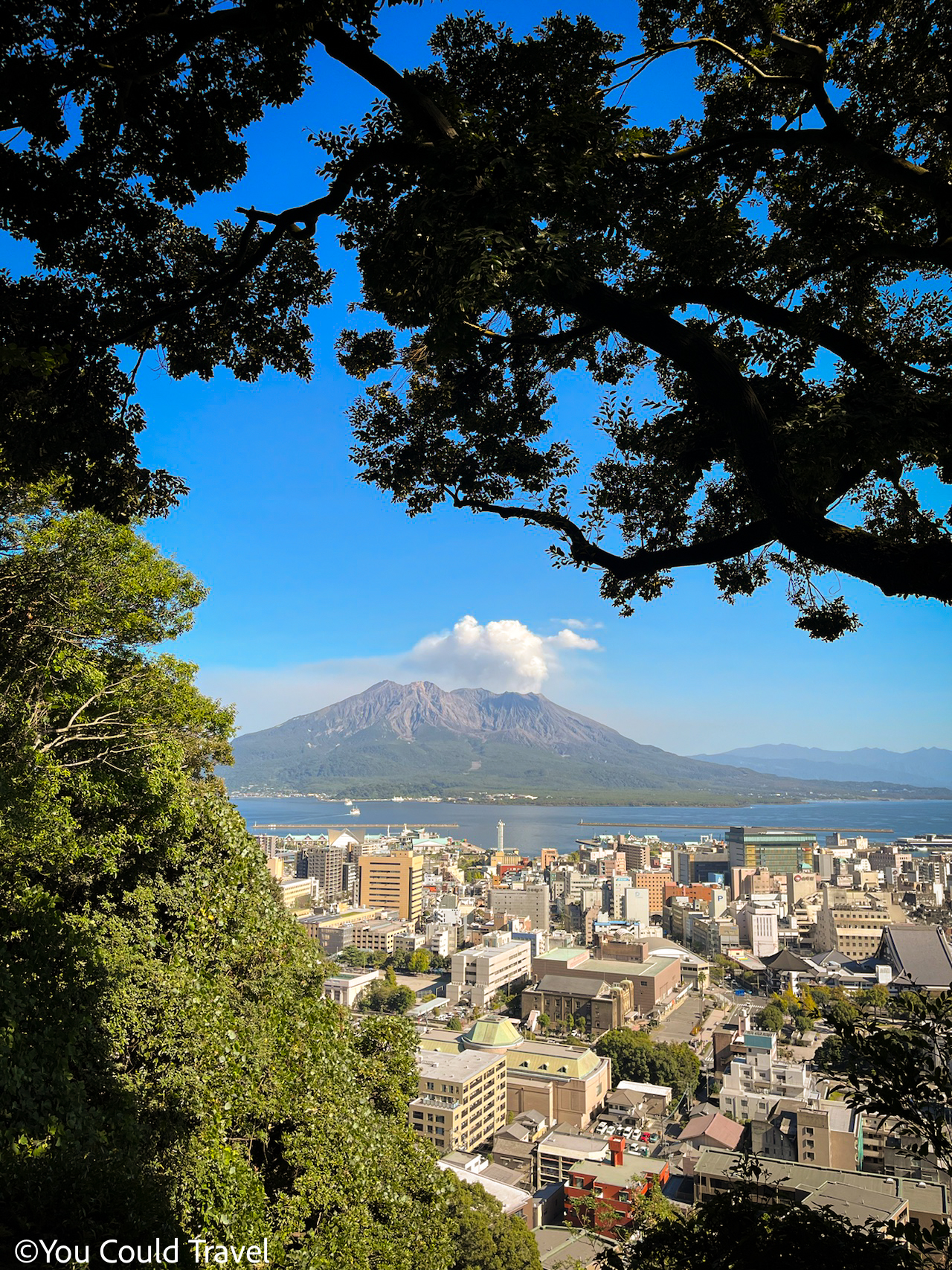
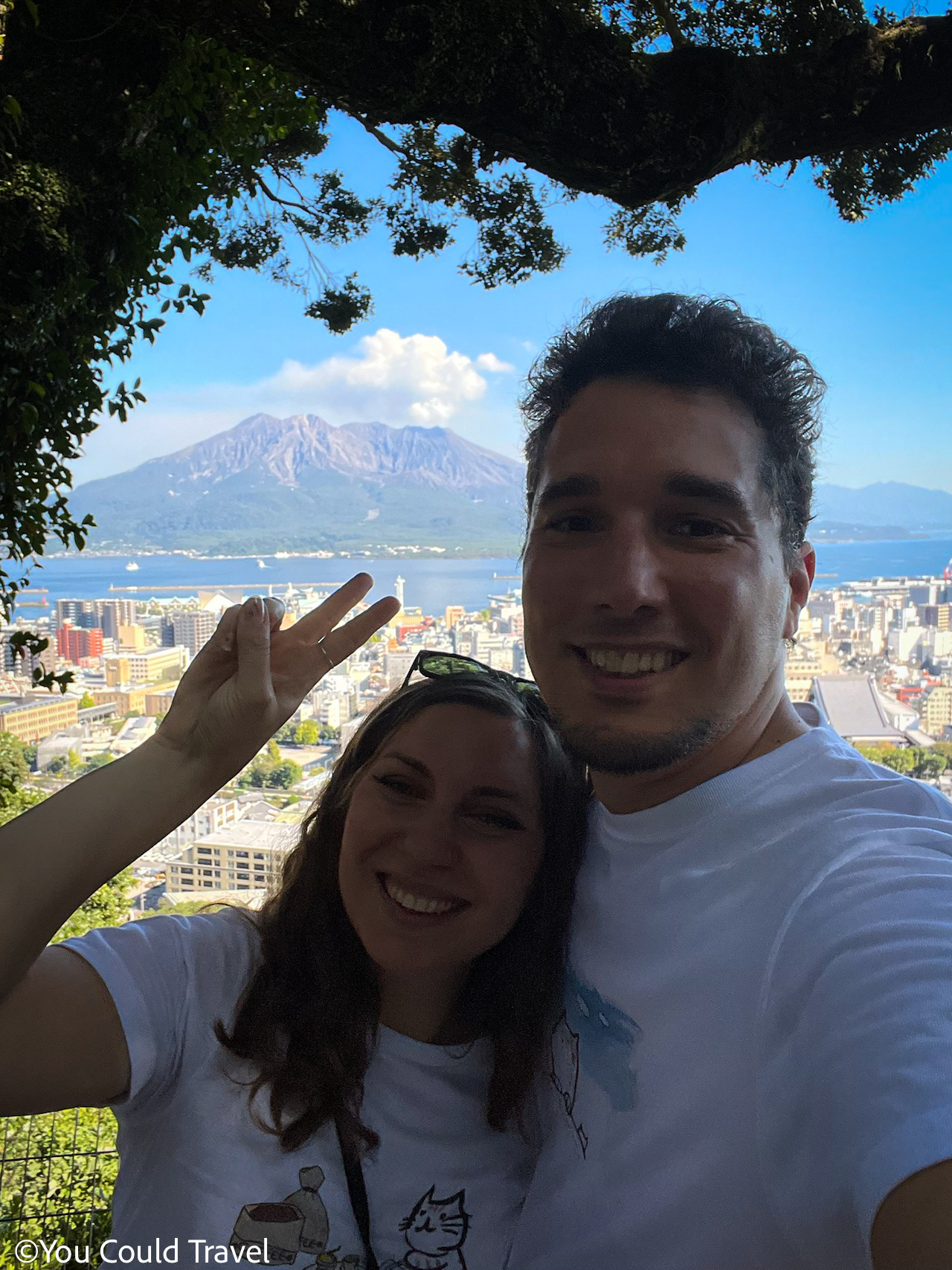
Yunohira Observatory
Entry Fee: Free of charge
Shops Opening Times: 9:00-17:00
If you are committed and want to see the volcano in all its splendour, then you will want to head to Yunohira Observatory, a prime viewing spot located on the slope of Sakurajima.
Yunohira Observatory is positioned at about 373 meters above sea level, the highest point on Sakurajima that is accessible to the public. From this observatory, you can get an up-close view of the volcanic activity, including the Showa Crater, which has been particularly active since 2006.
Getting to Yunohira Observatory is an adventure in itself. Make your way to the ferry port in Honkoshinmachi (near the Kagoshima City Aquarium). Take the ferry to cross to Sakurajima Port. The journey is 15-20 minutes. Sakurajima Ferry operates 102 times on weekdays and 112 times on weekends and holidays.
From the port, take the Sakurajima Island View buses to the Yunohira Observatory. The trip takes around 20 minutes and the drive involves going up a winding mountain road.
Sakurajima Yogan Nagisa Park Footbath
Entry Fee: Free of charge
Foot bath Opening Times: Available from 9:00 until sunset
“Sakurajima” Yogan Nagisa Park Footbath is a foot onsen located at the base of mountain Sakurajima, just 5 minutes from the ferry port. Yogan Nagisa Park itself is situated along the coast, offering stunning views of Kagoshima Bay and the city skyline across the water. Within it, there is the onsen footpath with natural hot springs that gush out from 1,000 meters underground.
This footbath is one of the longest of its kind in Japan, making it a distinctive attraction in Sakurajima. Not only do you get to relax after a long walk, but you also get to admire the volcano from here.
There is no admission fee to use the bath. Bring your own towel or purchase an original Kagoshima towel from the Sakurajima Visitor Center or Kokumin Shukusha Rainbow Sakurajima. To use the bath, remove your shoes and ensure that no clothes touch the water. Enjoy!
Tenmonkan
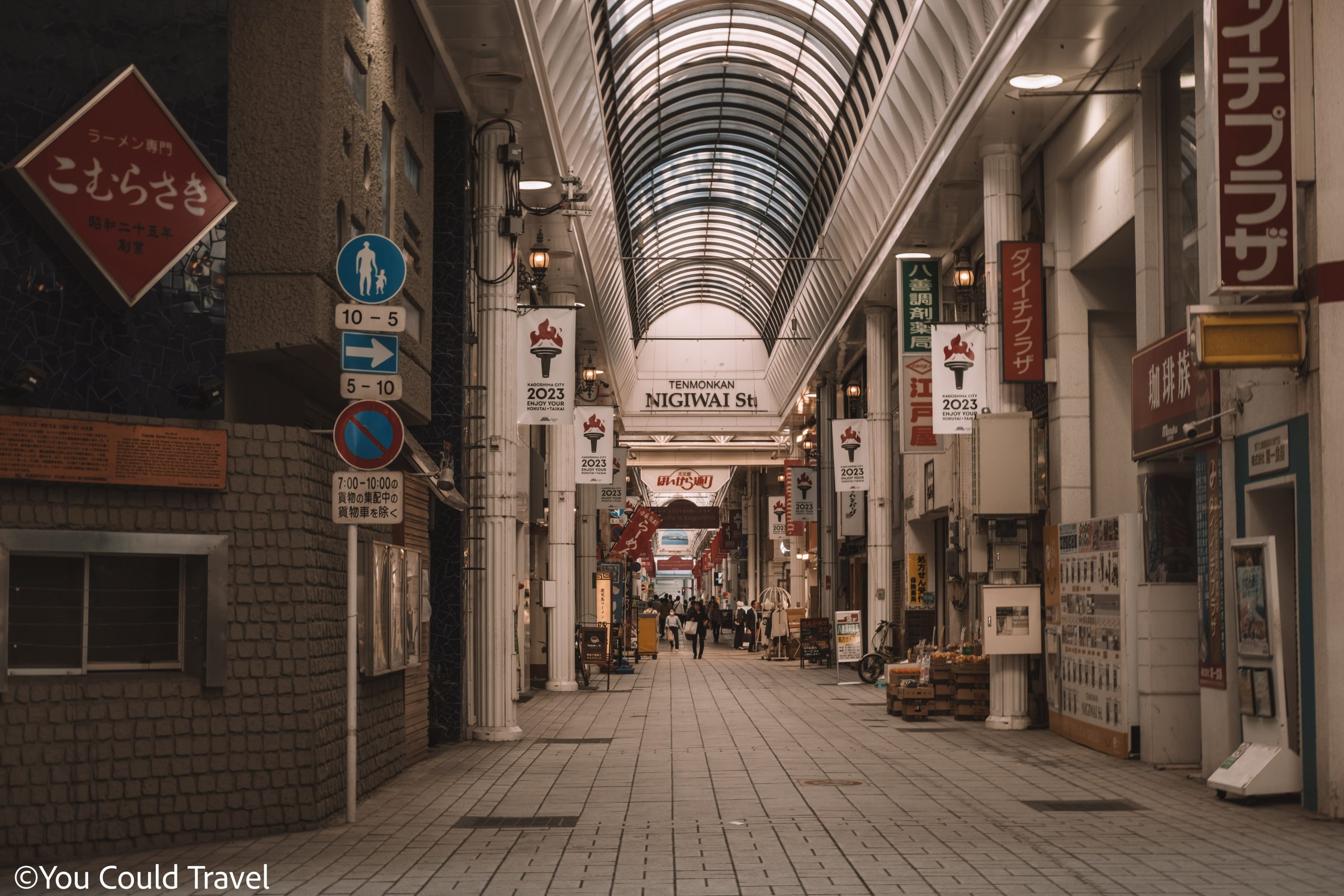
Tenmonkan is a large shopping and entertainment district in Kagoshima City. You’ll want to come here for the vast number of shops and restaurants, where you’ll eat local food.
Start with a walk down Tenmonkan Street, which is a traditional shotengai (Japanese covered shopping street). It’s a fantastic place to grab some local Japanese souvenirs, eat some cakes and local baked items. One thing that stood out to me is how much cheaper the prices were here in comparison to Tokyo! For example, a slice of exquisite cake here was in the region of 400 yen, compared to 800 yen in a similar place in Tokyo.
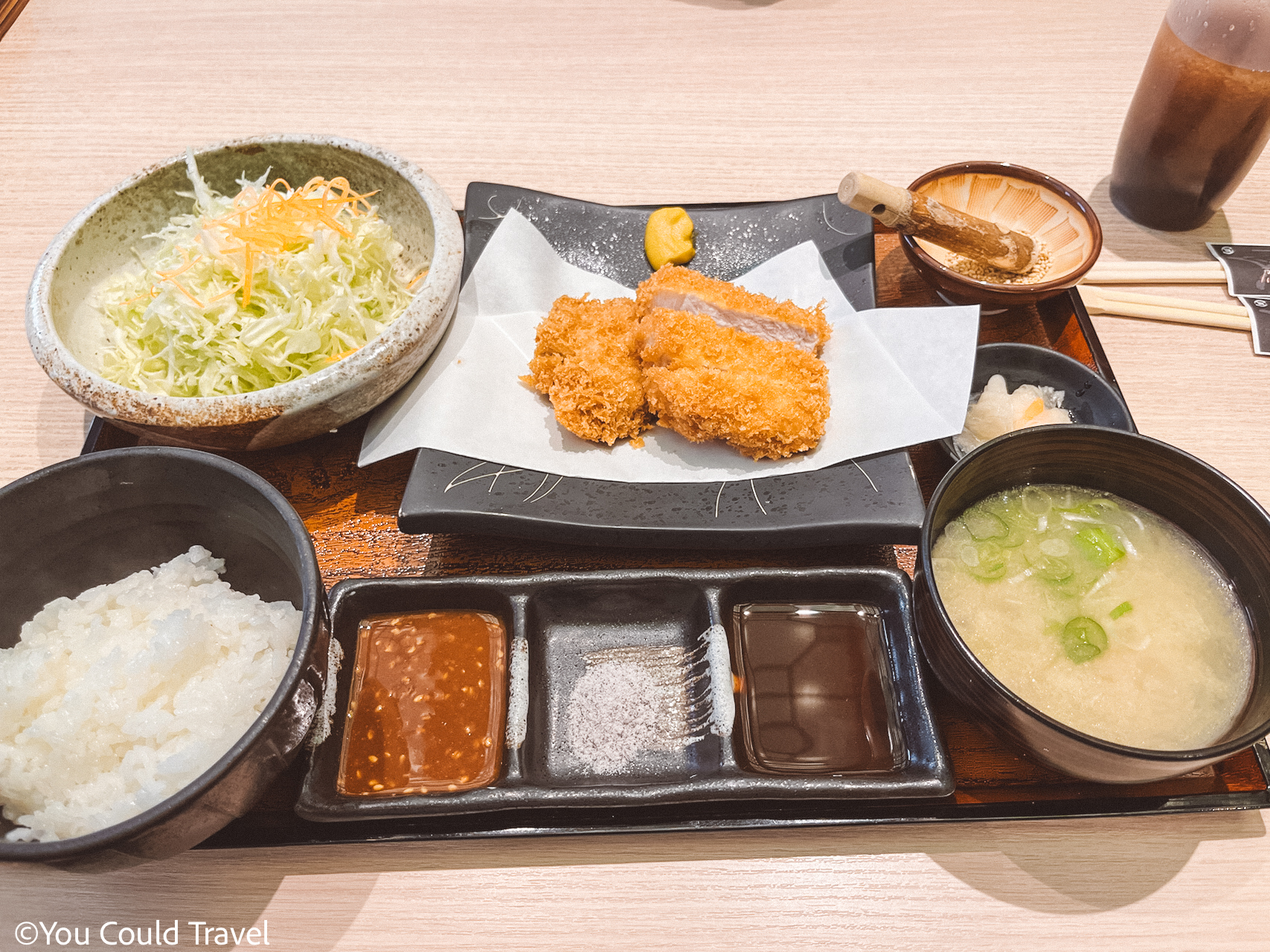
Tenmonkan is great for local cuisine too. Kagoshima has its own take on ramen called Kagoshima ramen, which has a lighter, clearer soup. The broth is made from a blend of pork and chicken bones and topped with the usual sliced pork (chashu), bamboo shoots (menma), scallions, and boiled eggs.
The most delicious local speciality is Kurobuta which is black pork. I especially recommend ordering a Kurobuta Tonkatsu.
CenTerrace Tenmonkan
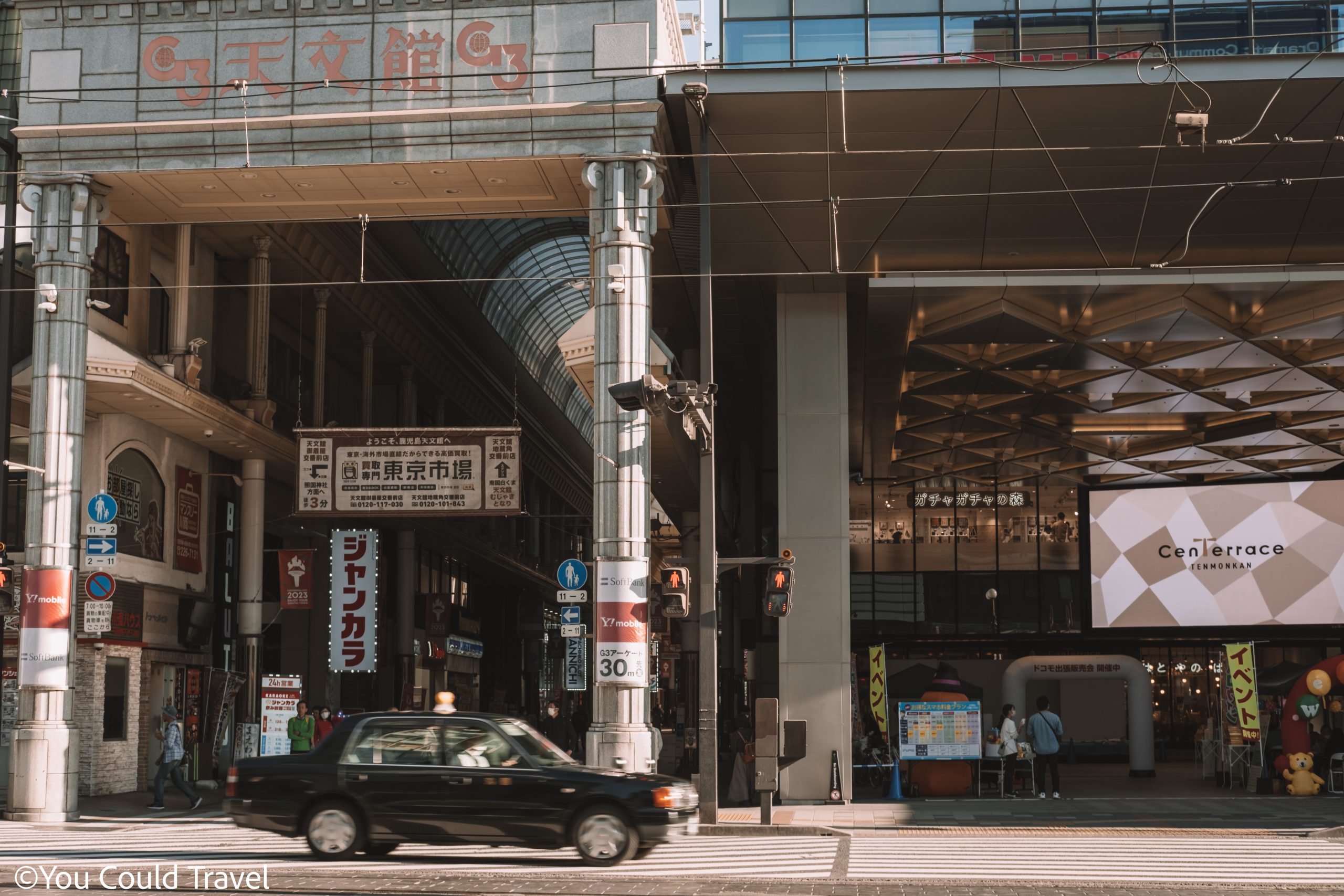
Shopping in Japan is always a joy and Kagoshima is no exception. CenTerrace Tenmonkan is a multi-level shopping centre just opposite the entrance to Tenmonkan Street. This is your stop for coffee (and more food, of course). The coolest thing about CenTerrace Tenmonkan is the Astronomical Museum Library located on the 5th floor. It looks super modern and inviting and there is even a gallery next door.
On the second floor, you’ll find the Gachagacha Forest which is a maze-like space full of capsule toy machines, perfect for gachapon lovers. I found a really cool gachapon dispenser specialising in mushroom keychains and couldn’t resist not getting one. Awesome souvenir attached to my travel backpack now.
Sengan-en
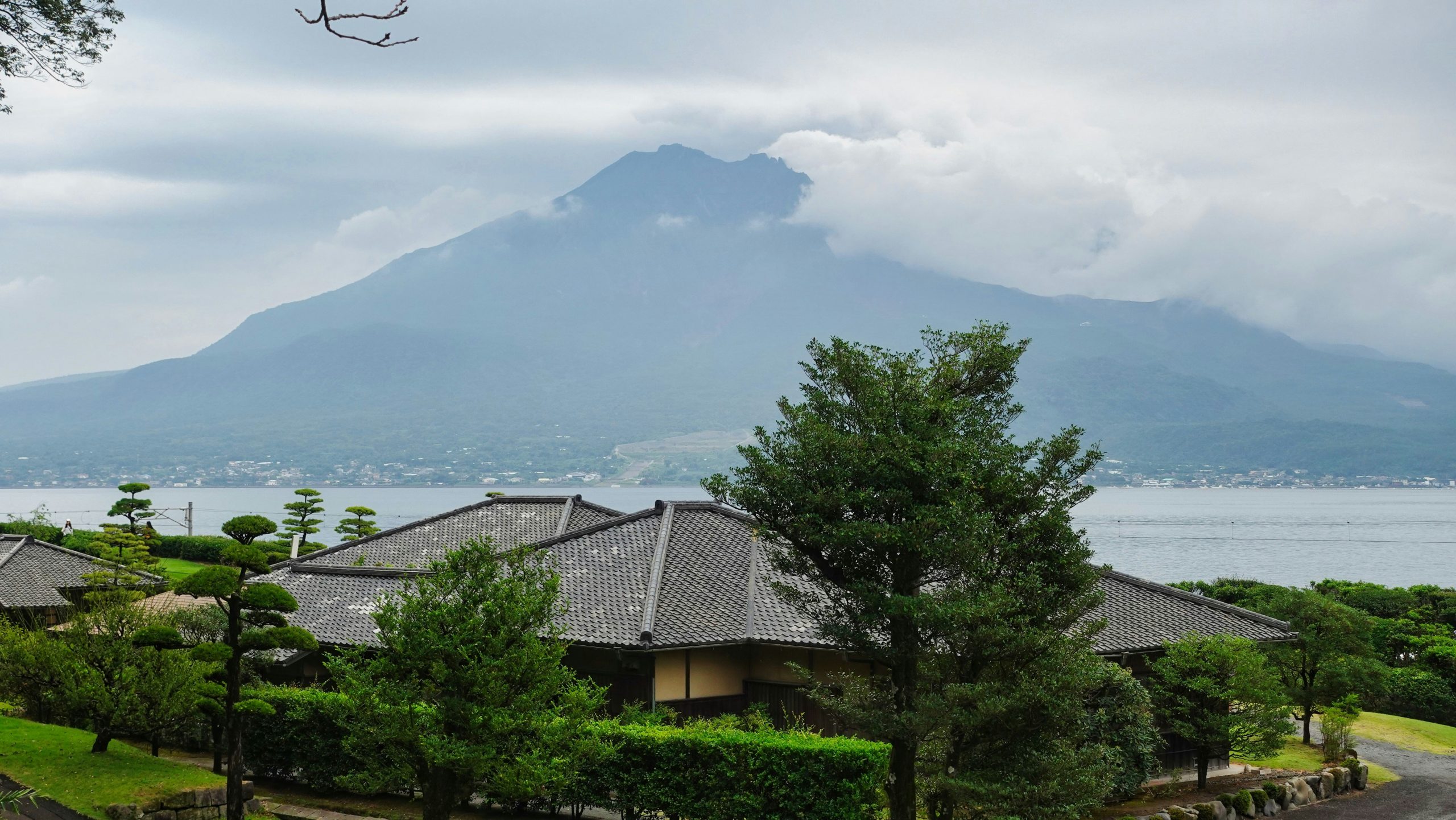
Entry Fee: 1600 yen (garden, shoko shuseikan, palace) or 1000 yen (garden, shoko shuseikan)
Opening Times:9:00-17:00
Sengan-en is a beautiful garden by the Kagoshima bay, originally built in 1658 by the Shimazu clan. The garden is famous for its amazing views of Sakurajima, but it’s the garden itself that is the main attraction here because it’s a a UNESCO World Heritage Site.
The garden is traditional Japanese with typical features like like ponds, stone lanterns and wooden houses. The most interest aspect is that among the usual green vegetation featured in most traditional gardens, you’ll also see palm trees here.
There’s a historic house within the garden that belonged to the Shimazu family, where you can see how the samurai and their families lived in the past.
Iso Beach
Iso Beach is a public sanby beach located just 5 minutes walk from Sengan-en. Iso is the most popular local beach from where you can listen to the gentle waves of the water while admiring the stunning Mount Sakurajima in the distance.
Please note that swimming is not always be recommended due to the volcanic activity in the bay, the beach is a perfect spot for relaxation and taking in the views. There are toilets and a small Japanese sweet shop to grab a snack.
If you’re a fan of watersports, Iso Beach is a great starting for kayaking and paddleboarding.
Statue of Okubo Toshimichi (Lyons Park)
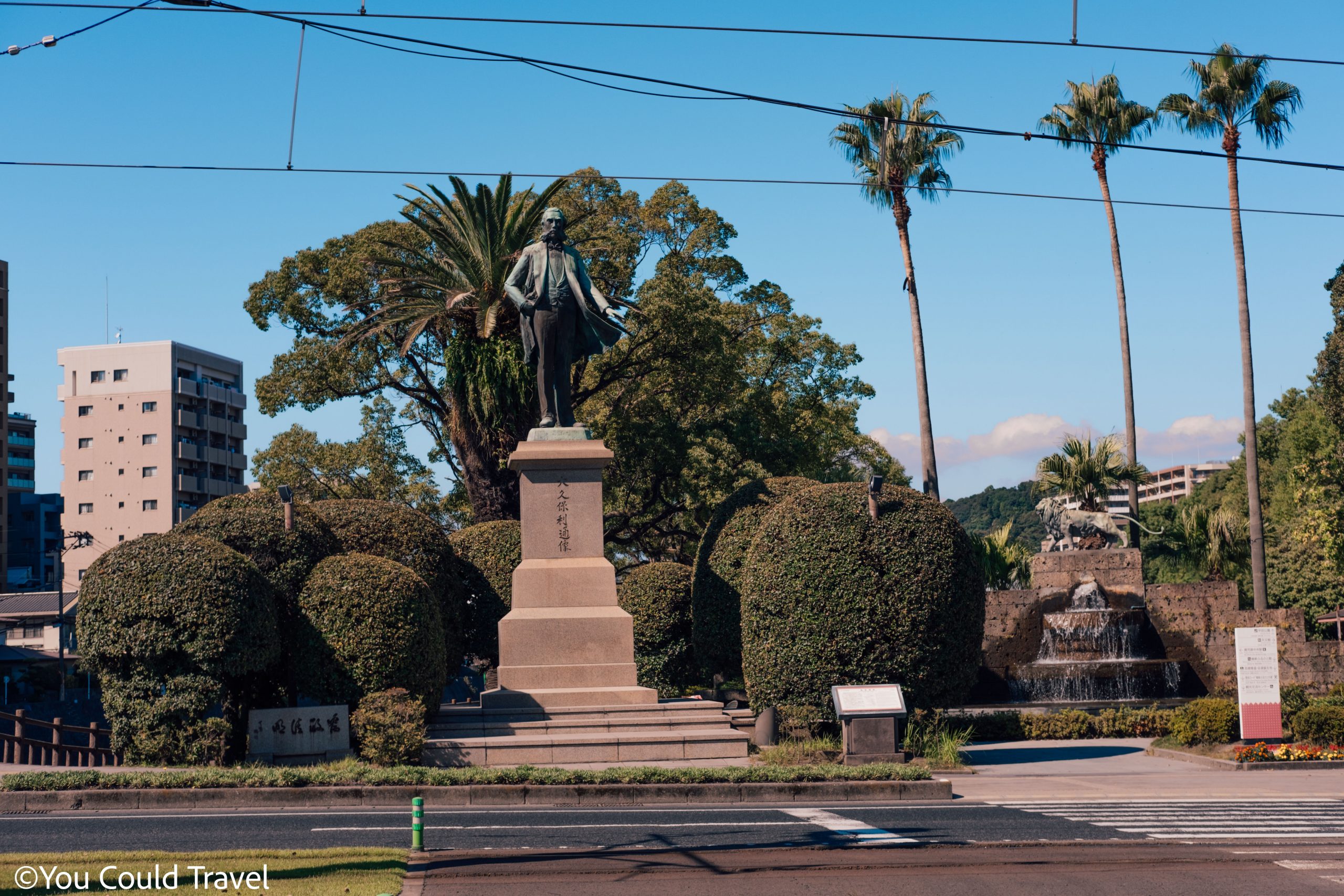
The entrance to the Lyons Park is marked by the statue of Okubo Toshimichi. Okubo Toshimichi was a prominent Japanese samurai and statesman who played an important role in the Meiji Restoration. Toshimichi-san was born in 1830 in Kagoshima and established himself as one of the leaders of the Satsuma Domain. Okubo was a key figure in the overthrow of the Tokugawa shogunate, which had ruled Japan for over 250 years
Following the restoration, Okubo became one of the most influential leaders in the new Meiji government. He held several important positions, and worked on implementing many reforms included the abolition of the samurai class, the establishment of a conscript army, and the development of new infrastructure and industry.
Okubo Toshimichi’s life came to a tragic end in 1878 when he was assassinated by disgruntled samurai.
Beyond the statue, you’ll want to walk along the Inari River in the Lyons Park. This is an especially popular spot during the spring blossoms, when you’ll find food stalls selling Japanese foods.Yoshino Park
Yoshino Park
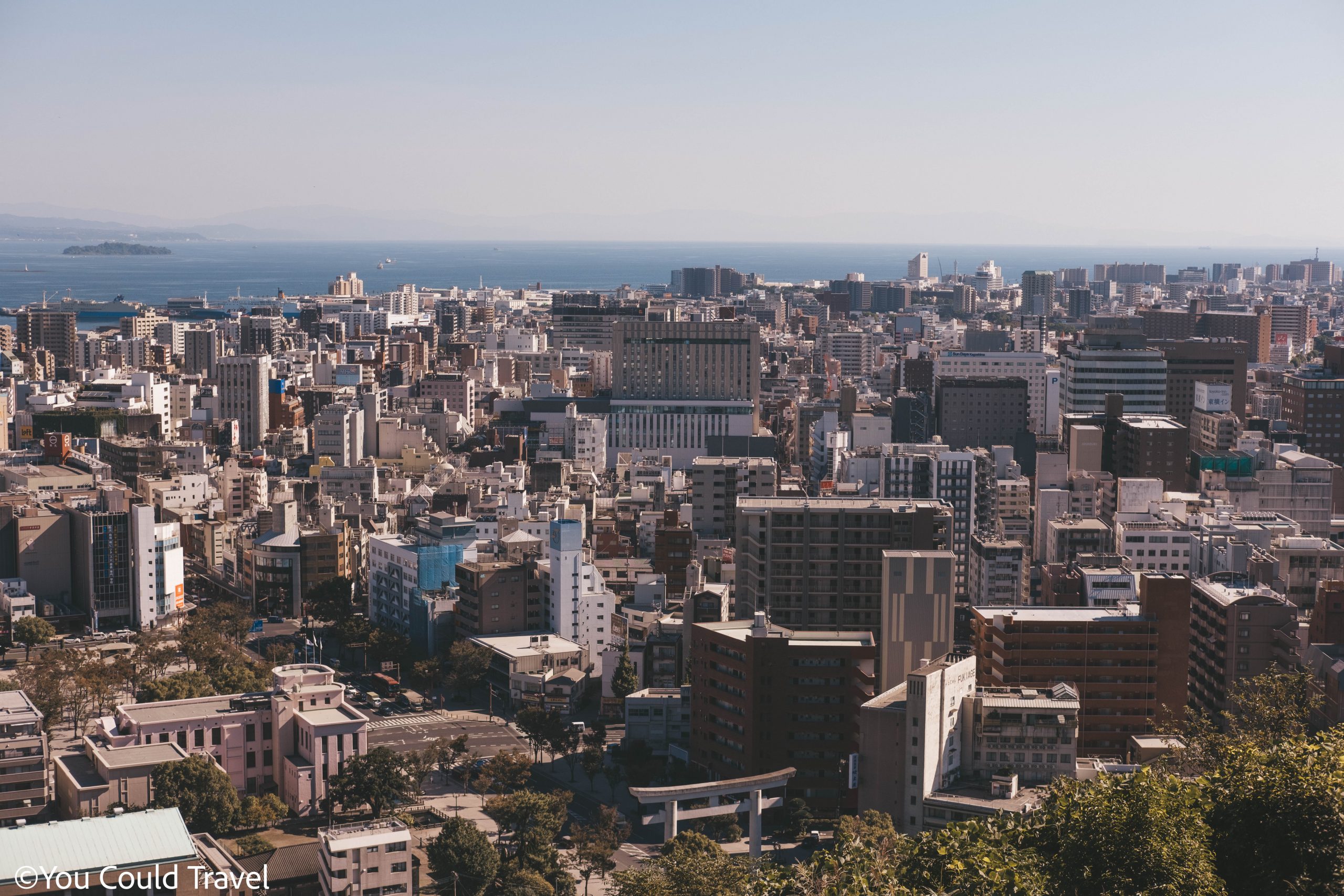
Entry Fee: Free of charge
Opening Times: 7 am–5 pm
Yoshino Park is a popular cherry blossom viewing spot in the spring, located along the Kagoshima Bay. The park is further out of the main city centre area but it is worth your while as it’s vast and offers panoramic views of the city and the Sakurajima volcano.
Yoshino Park is perfect for long walks in nature, for when you just want to reconnect with your surroundings. It has walking paths, open lawns, and areas designated for picnics and relaxation. It also includes playgrounds if you’re travelling with kids, making it an ideal place for families to spend time outdoors.
If you’re visiting Japan during Spring, note that Yoshino Park often hosts events and festivals, especially during the cherry blossom season.
Amino-no Sato
Entry Fee: 400 yen (plus extra for any workshop or special activities)
Opening Times:9:00-17:00
Amino-no Sato is a cultural and botanical attraction located around 25 minute train ride away from the main Kagoshima station. Amino-no Sato celebrates the rich heritage and tropical beauty of the Amami Islands. Besides the gorgeous landscaped gardens here, you’ll want to engage in interactive activities such as dyeing handkerchiefs with natural plant-based dyes, braiding workshops, weaving, and trying on the exquisite Oshima pongee garments. Please note that prior reservation for activities is required.
As I’m a huge nature lover, the main highlight for me was the garden called Path of Islands Garden. It was created to incorporate stones to mimic the archipelago’s appearance.
To get to Amino-no Sato, take the JR Ibusukimakurazaki Line from Kagoshimachuo Station to Taniyama Station (4 stops, 12 minutes), then walk for about 15 minutes. The journey is covered by your JR Pass, or costs about 250 yen per person.
Kagoshima Chuo Station (Amu Plaza Kagoshima)
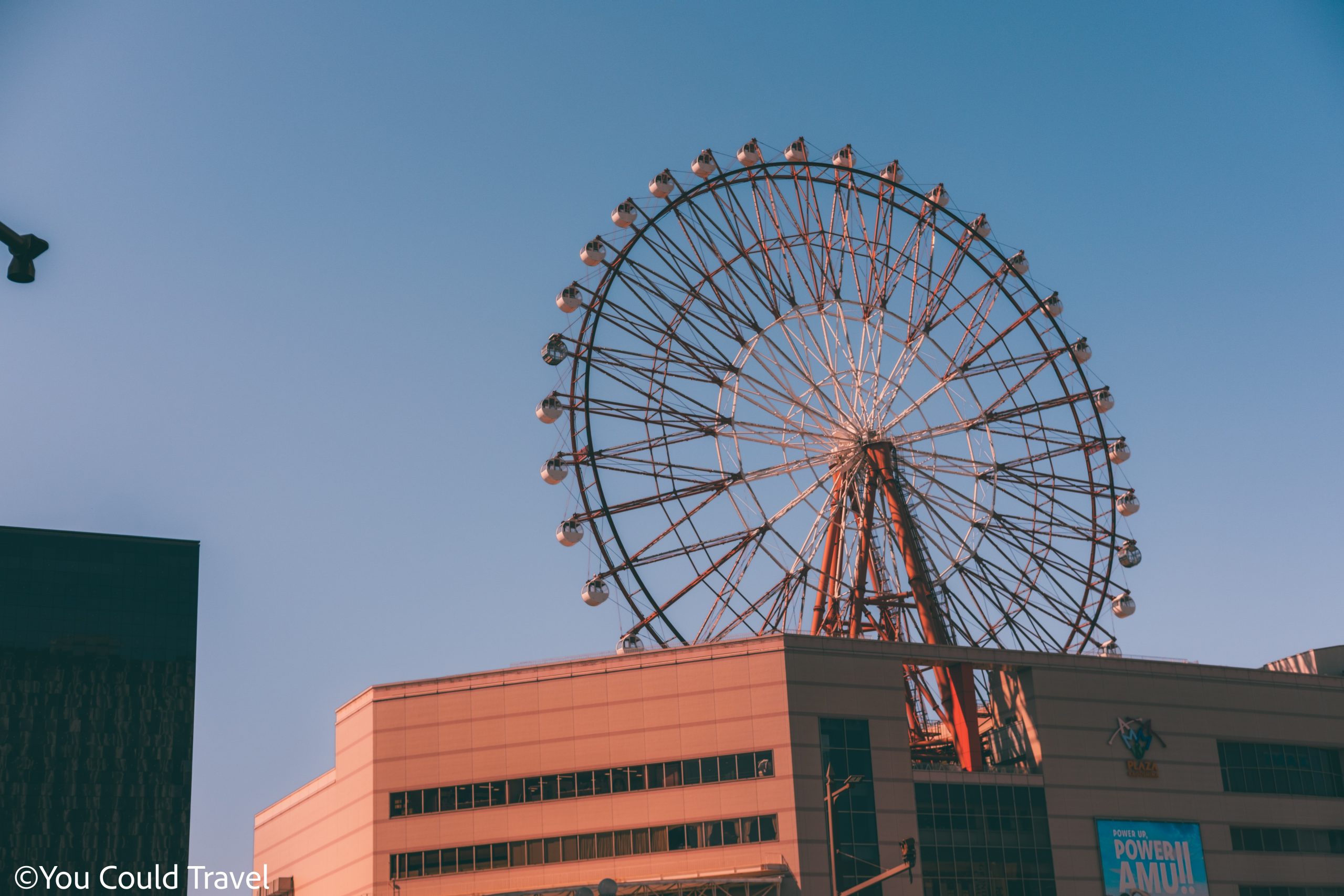
Kagoshima Chuo Station is a key train station that connects this area with the rest of Kyushu (and beyond). It’s especially known for being part of the Kyushu Shinkansen line, which means this will be your port of arrival and departure to Kagoshima. Similar to many shinkansen train stations in Japan, the Kagoshima Chuo Station is a huge place for shopping and eating.
Inside, you’ll find Amu Plaza Kagoshima, a big shopping center right at the station, and places like Gourmet-Yokocho and Miyage-Yokocho where you can grab a quick snack or buy gifts near the entrance. It’s really handy for people coming to visit Kagoshima because there are also bus and tram stops here that go around the city’s top spots.
One cool thing at Amu Plaza is the huge Ferris wheel. It’s 60 meters wide and takes you up 91 meters high, so you can see over the buildings and get a great view of Sakurajima, the volcano nearby. The Ferris wheel stays open until 10:45 pm, so you can see the city lights at night, too.
Places to visit near Kagoshima
Kagoshima is a stunning place to visit in Japan, but many people come here for 1-2 nights before continuing their journey to nearby points of interest, like Ibusuki and Yakushima.
Ibusuki
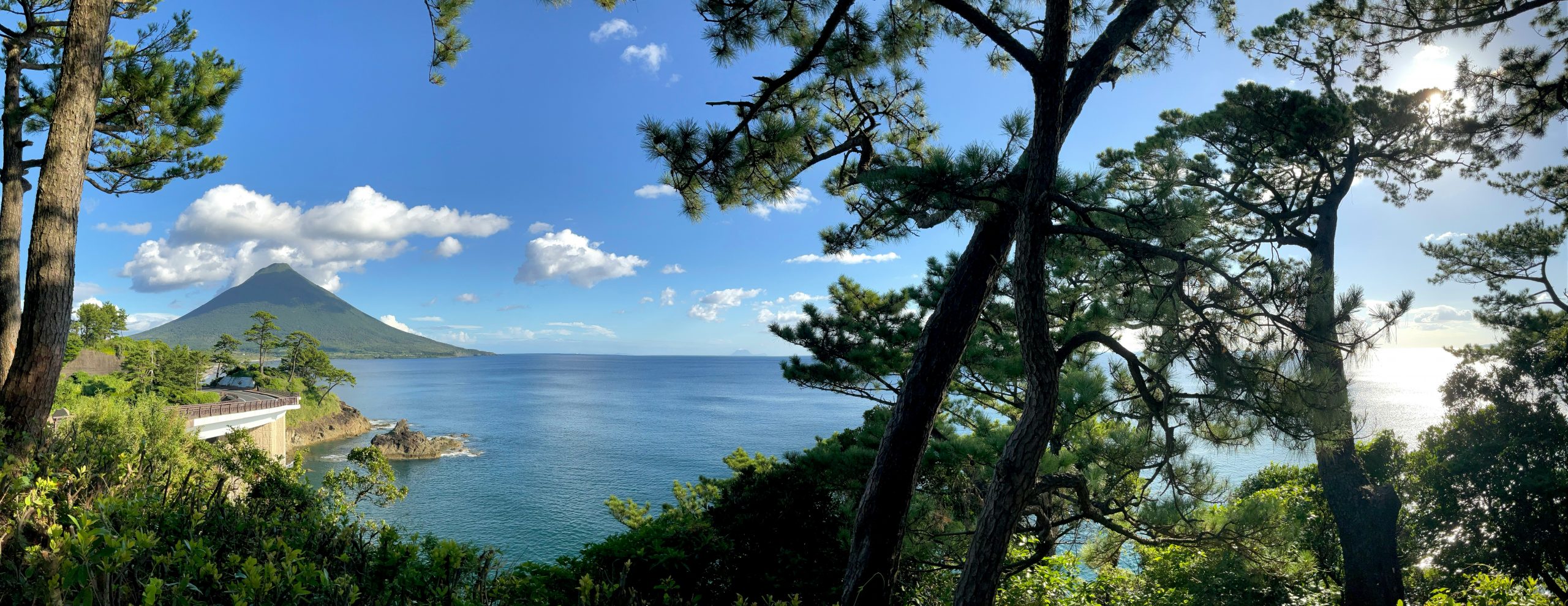
Ibusuki is a popular spa town where you get to experience a unique treatment where you’re buried in naturally heated sand. It’s definitely an unusual experience, but one that takes care of your achy muscles. You’ll want to head to the Sunamushi Onsen for your treatment.
Beyond the sand baths, Ibusuki is blessed with a mild, subtropical climate and lovely landscapes. To get to Ibusuki, get on the JR Ibusukimakurazaki Line (17 stops, 90 minutes) from Kagoshima Chuo Station to Ibusuki Station. The journey is covered by your JR Pass or costs around 1000 yen per person.
Yakushima
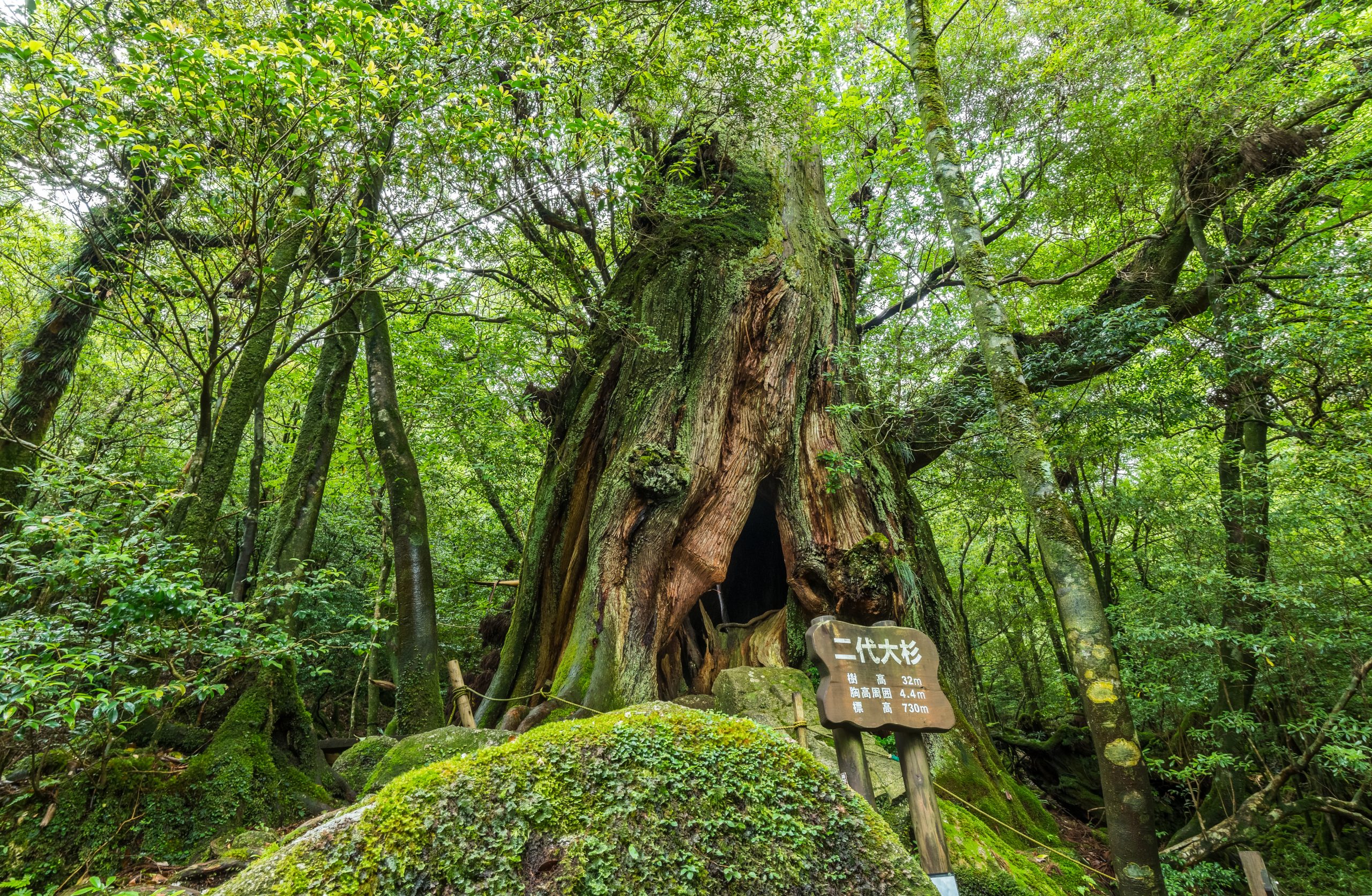
Yakushima is a UNESCO World Heritage Site and one of the most beautiful Japanese islands with ancient cedar forests. It’s a perfect location for nature lovers and Studio Ghibli fans. Yakushima inspired Hayao Miyazaki to create the animated masterpiece Princess Mononoke.
Getting to Yakushima usually involves a ferry (around 3 hours on the speedy ferry or overnight for the car ferry) or flight (40 minutes) from Kagoshima. Once there, you can hike in the mountains, relax in hot springs, and enjoy the peaceful surroundings. For deeper exploration, I recommend renting a car.
Kirishima National Park
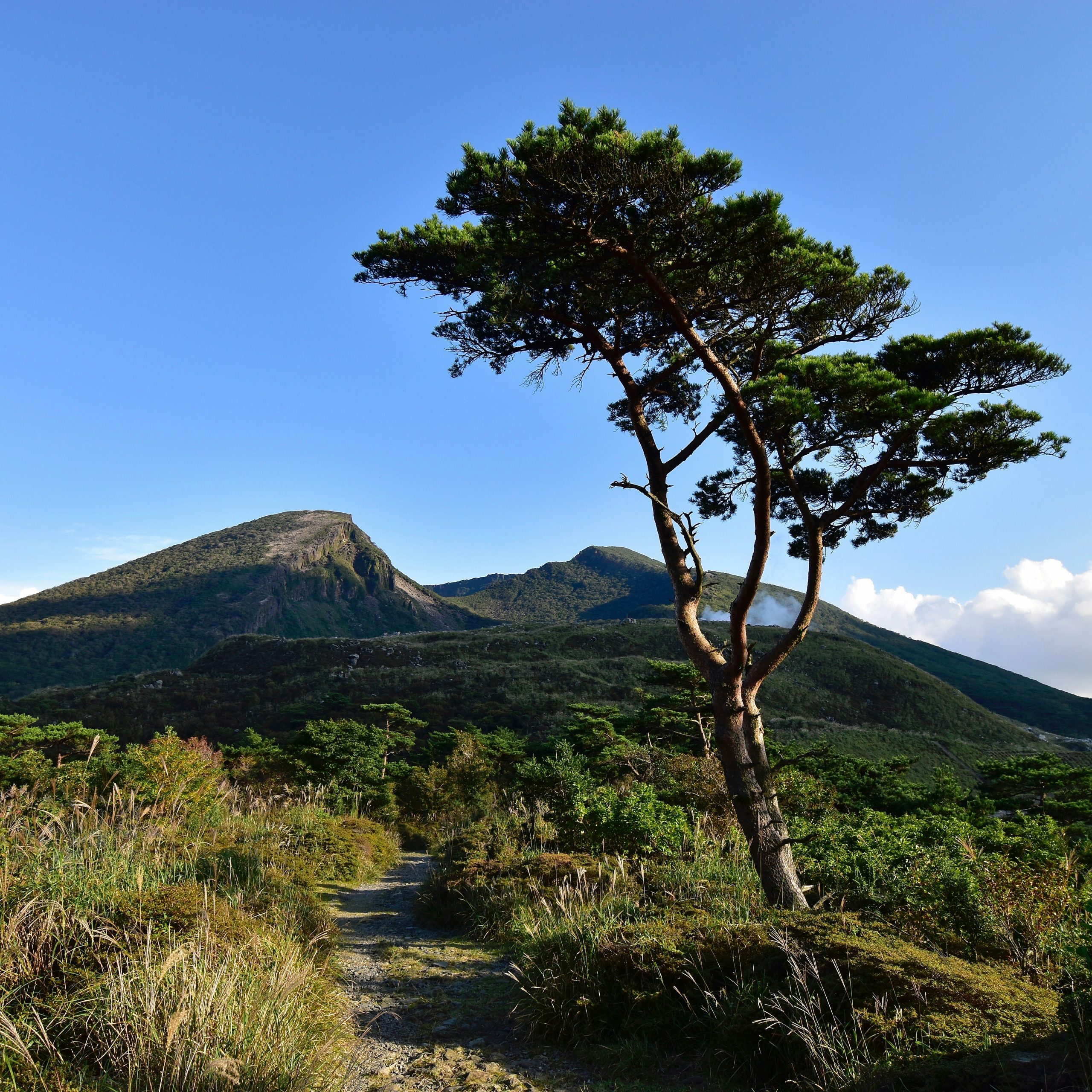
Grab your hiking boots and head to the beautiful Kirishima National Park, that is home to mountains, a volcanic lake and hot spring. The park is rich in mythology and part of local Japanse legends, said to be the birthplace of some Japanese gods.
There are numerous hiking trails that range from easy walks to more challenging treks, leading you through a variety of landscapes, from lush forests to volcanic craters and peaks. Spring is a particularly beautiful time to visit Kirishima National Park when the azaleas and other wildflowers bloom.
To get to Kirishima National Park you can either drive (1 hour) or take the public transport, a combination of train and buses to the entrance to the park (2 hours and 30 minutes).
Okinawa
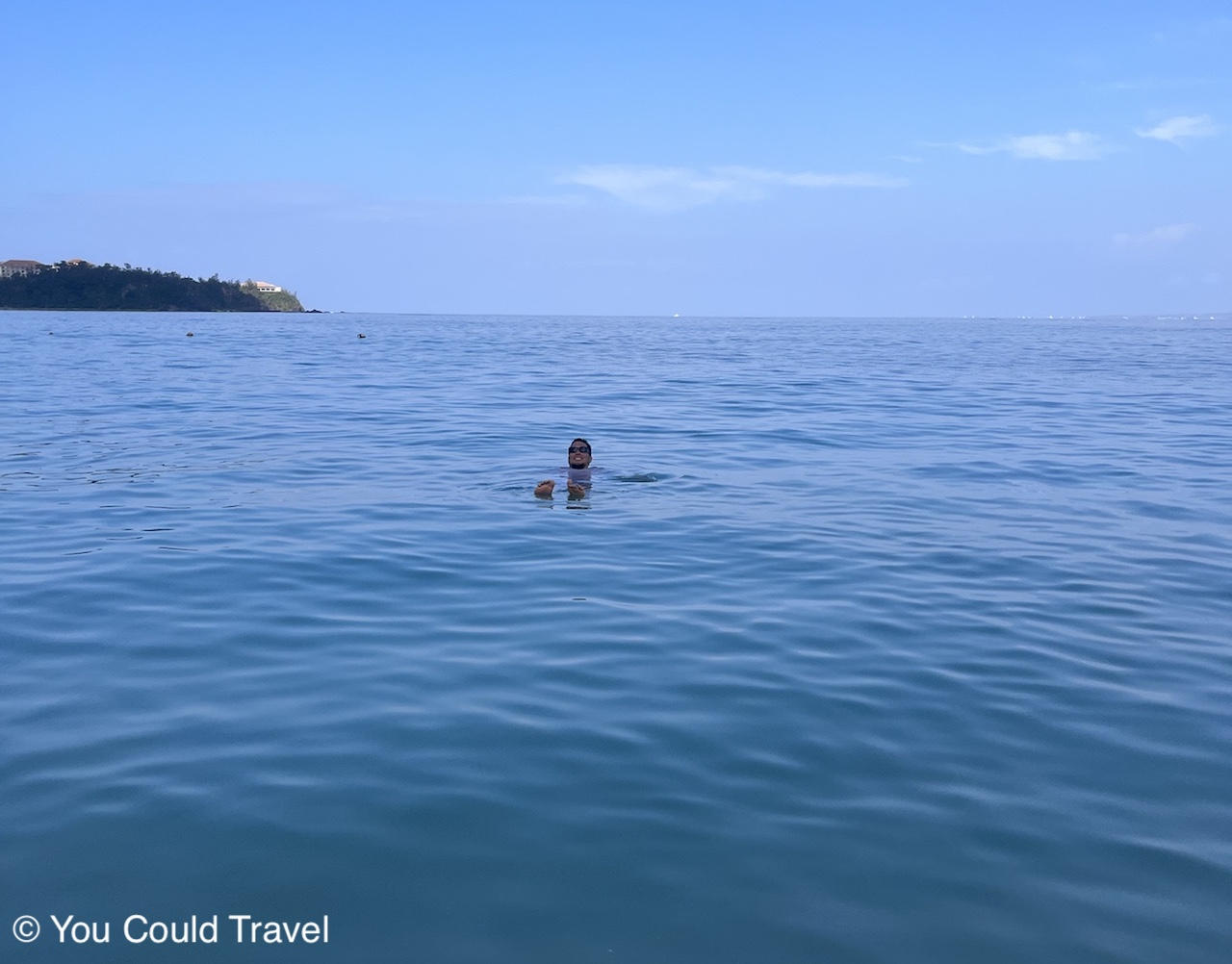
A bit further away but accessible by plane, Okinawa has quickly become one of my favourite places in Japan. Having spent close to a week exploring the main island, I can genuinely say that it’s a stunning subtropical place full of incredible scenery, beaches, and delicious food. You will need to fly to Okinawa, but it takes just 90 minutes to reach Naha from Kagoshima.
When to visit Kagoshima
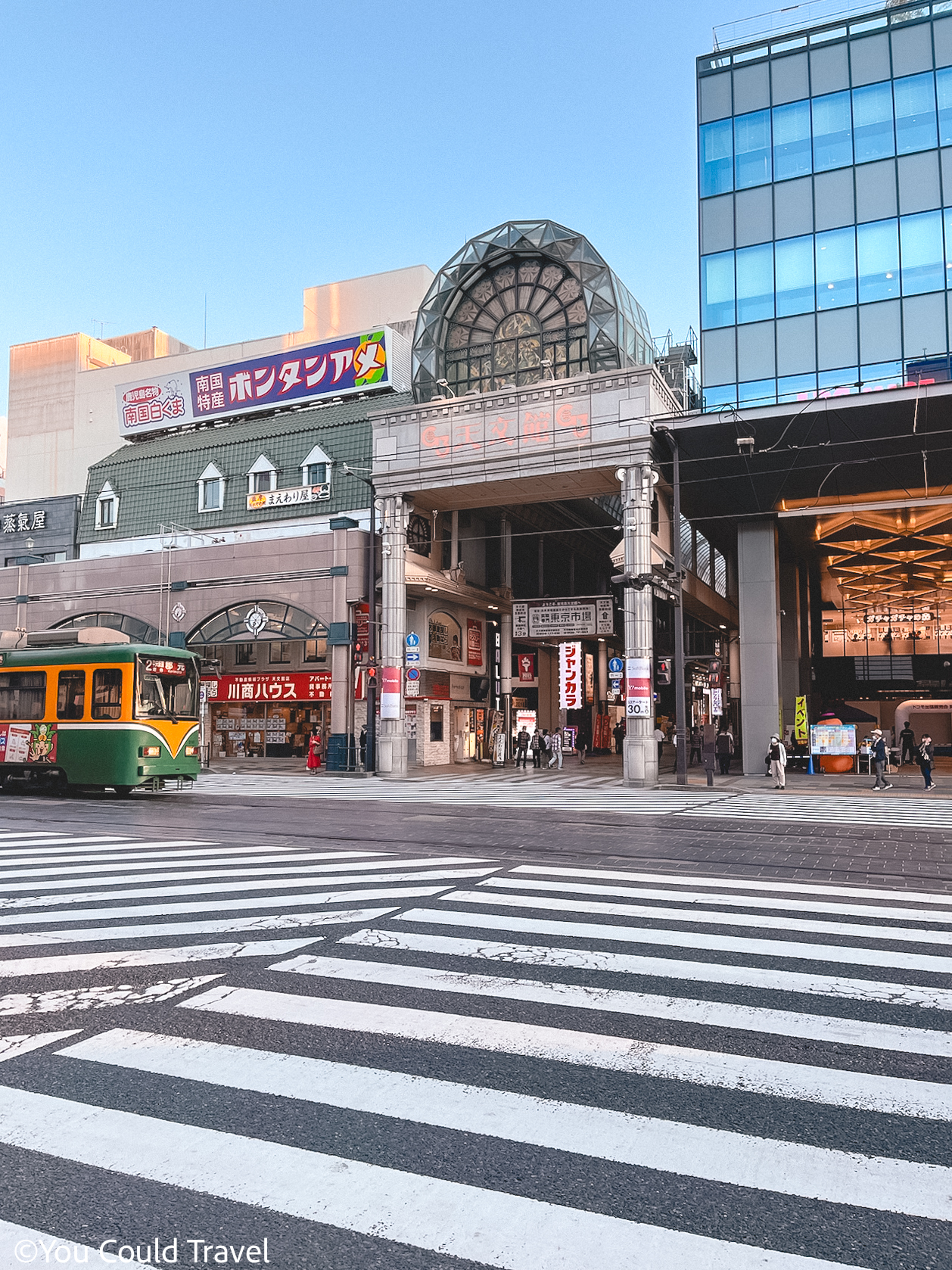
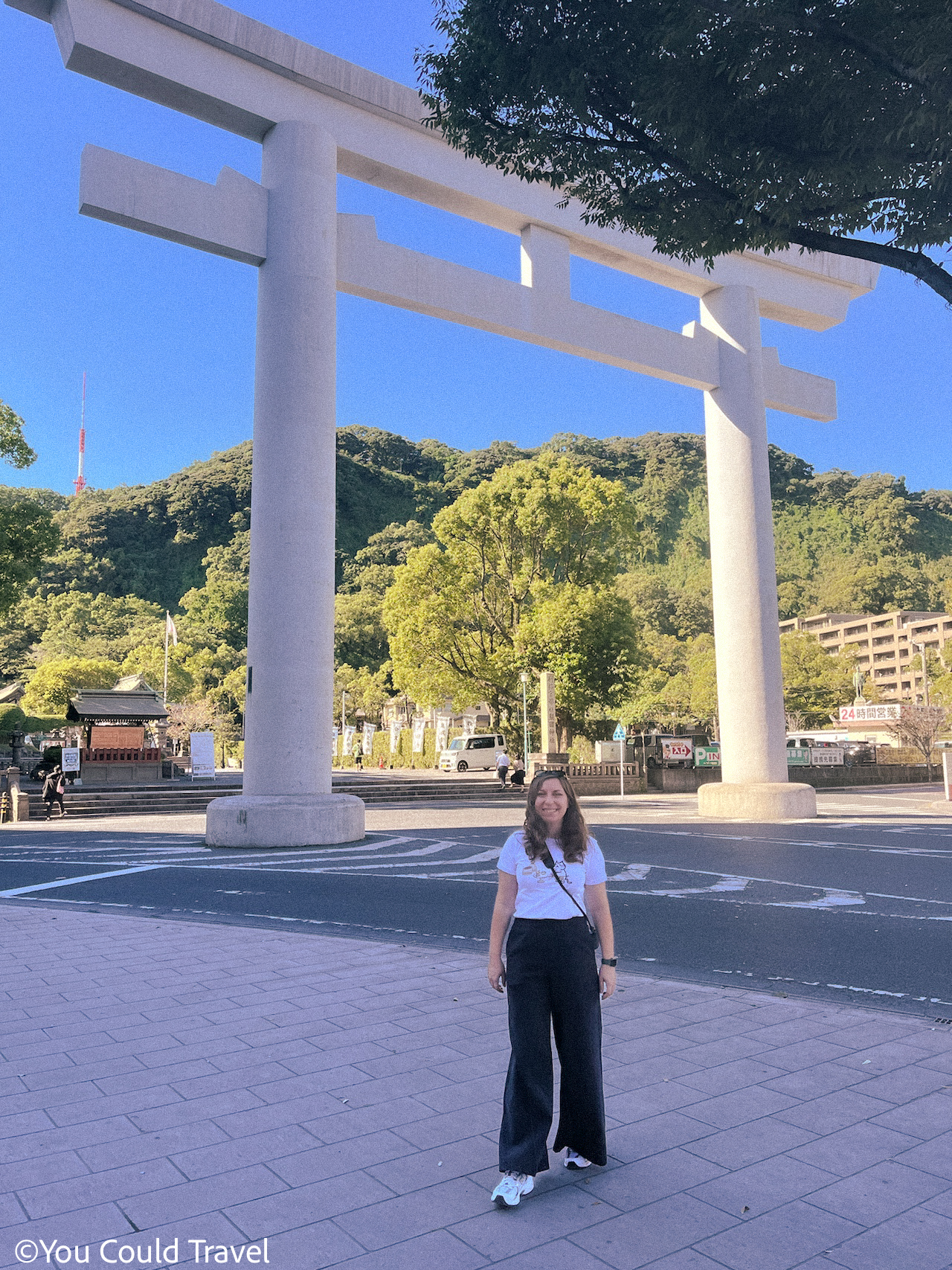
Kagoshima has a perfect mild climate, which makes it wonderful to visit year round.
Spring and Autumn are the best times to visit Kagoshima. The weather is warm but not too hot, and the cherry blossoms bloom in late March making it a beautiful time for sightseeing. Autumn is excellent with cooler temperatures and less rainfall. The changing colors of the leaves in areas like Kirishima National Park make for spectacular scenery.
Winter is relatively mind in Kagoshima compared to the rest of Japan, with temperatures rarely dropping below freezing. It’s a great time to visit hot springs and perfect if you’re looking a bang for your buck as prices are much lower being off season.
Where to stay in Kagoshima
Kagoshima has so many natural onsen, it would be a shame to come all this way and not stay in a hotel with a public bath. Here are the hotels I recommend in Kagoshima.
This is the hotel my husband and I stayed in during our Kagoshima trip. It was very affordable, had a hot spring bath overlooking the Kagoshima Bay and the Sakurajima mountain. We booked a non-smoking double room with Sakurajima view. The room was comfotable, affordable and very clean. Perfect for a couple of nights in Kagoshima.
Sheraton Kagoshima is a 5-star hotel in Kagoshima that offers a variety of amenities. It has a fitness center, garden, terrace, and its own restaurant. For business travelers, there’s a business center and concierge service. The hotel does have a lovely spa and wellness facility including a sauna and a hot bath spring.
Shiroyama hotel is all about the spa as it features a mist sauna, a flower bath and massage treatments. Since I’m recommending you to stay in hotels with a public onsen, this hotel is no exception as it is home to an open air natural hot spring bath overlooking the gorgeous Sakurajima volcano.
A standard business hotel chain that has indoor/outdoor hot-spring baths. The rooms are small and compact and relatively short distance from the main Kagoshima station. There is a spa centre with a sauna here too!
Final thoughts on Kagoshima
While I wanted to visit Kagoshima mainly to see Mount Sakurajima I was very excited to see the array of attractions available, ranging from the cool onsen at the hotel, to stunning open air parks.
I loved our time in Kagoshima, and I am in the process of planning a trip back for this year. I loved the weather, the laid-back atmosphere and just how welcoming the locals have been towards us. Maybe it’s because Kagoshima is not getting the usual influx of tourists, but we genuinely felt like this was one of the most relaxing places we’ve seen in Japan. Please make sure to add it to your Japan itinerary when you visit Japan next.
Frequently Asked Questions
Is it worth going to Kagoshima
Kagoshima is 100% worth it, as it was one of the most laid-back cities I’ve visited in Japan. The highlight here is the nature, with views of Mount Sakurajima and several other parks dotted all around the city. There is culture thanks to the local museum, there is unique local food which include the Kagoshima fish cakes and the kurobuta pork, as well as great shopping options. I’ve found many souvenirs including special Kagoshima beers, lovely hand made local crafts and beautiful hand painted postcards with views of Sakurajima. Kagoshima is worth visiting if you love history too, as it played a significant role in the Meiji Restoration. Places like the Reimeikan Museum in Kagoshima City and the Chiran Samurai Residence Garden offer insights into its samurai past.
What is Kagoshima best known for
Kagoshima is well-known for Sakurajima, an active volcano that’s a big part of the city’s backdrop. It has a rich history with samurais and is famous for its tasty local food, like the special Kurobuta pork. People also go there for the hot springs, especially the sand baths in Ibusuki, and to visit nearby Yakushima island, known for its ancient forests and outdoor activities.
How many days should I spend in Kagoshima
For Kagoshima city 1-2 days is enough to see Mount Sakurajima, do a little shopping, see the main tourist attractions and eat local food. Overnight, I recommend staying in a hotel with hot springs to get the full Kagoshima experience. If you wish to take some day trips to the nearby Ibusuki or Kirishima National Park, then you’ll want to extend your stay to 3-4 days instead.
Is Kagoshima foreigner friendly?
I can only speak from personal experience and say that Kagoshima has been incredibly foreign friendly. We felt really welcomed there. At the Shiroyama Park Observation Deck, an elderly man came up to chat with us. He gave us tips on where to eat and shop for special Kagoshima produce. He also shared a bit about his life in Kagoshima and the area around it. He told us he’s really happy that tourists are coming back to Kagoshima, especially after everything slowed down with the pandemic. He was also pretty excited to get a chance to speak English with more people.

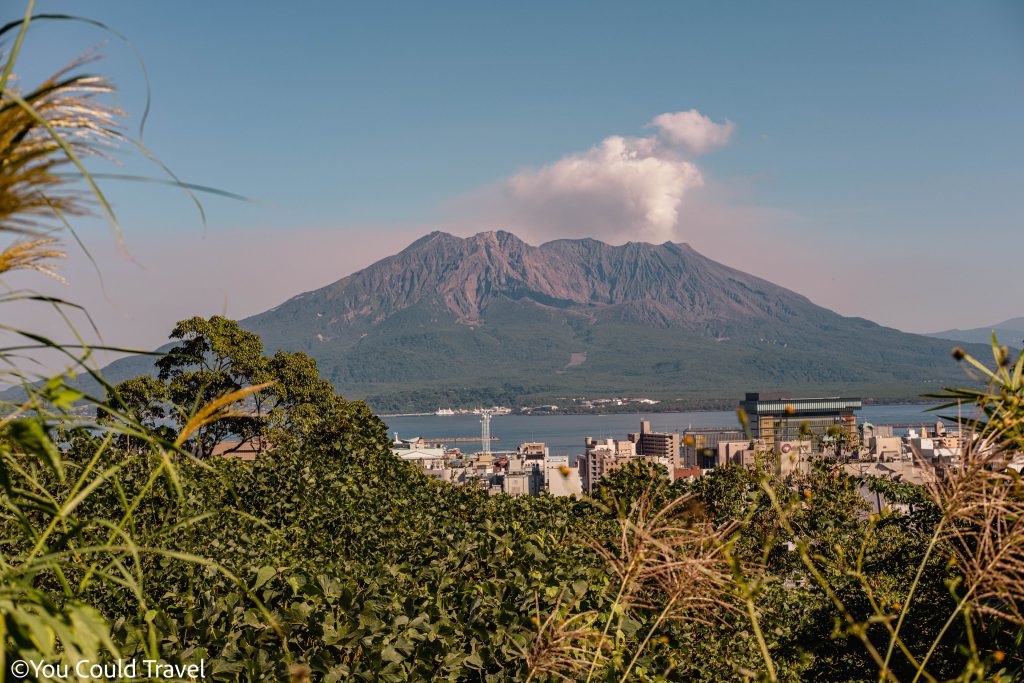
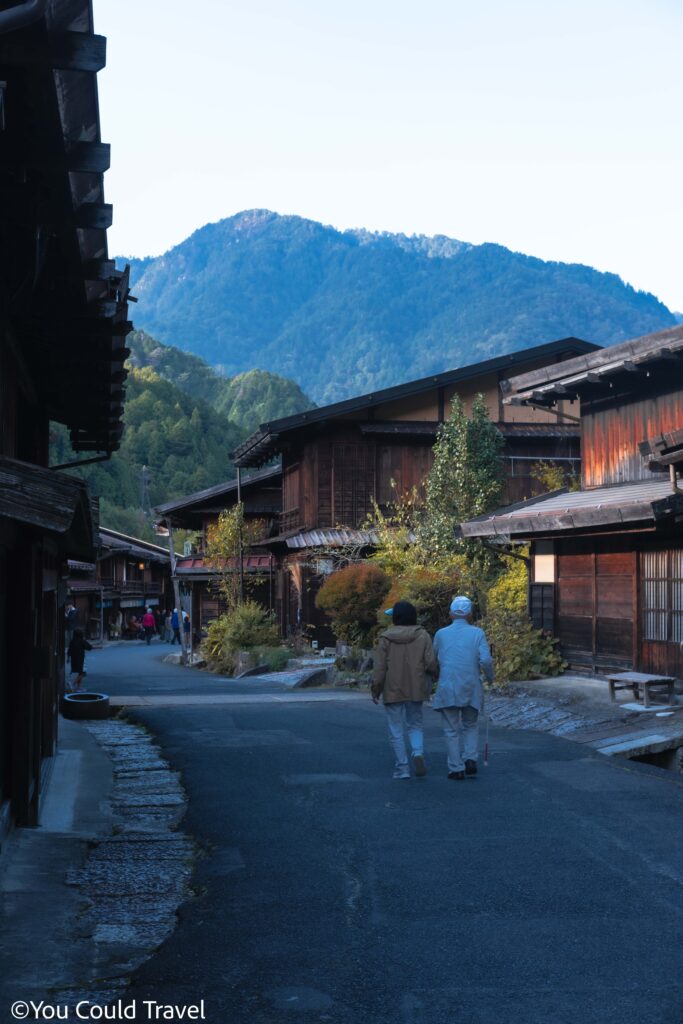
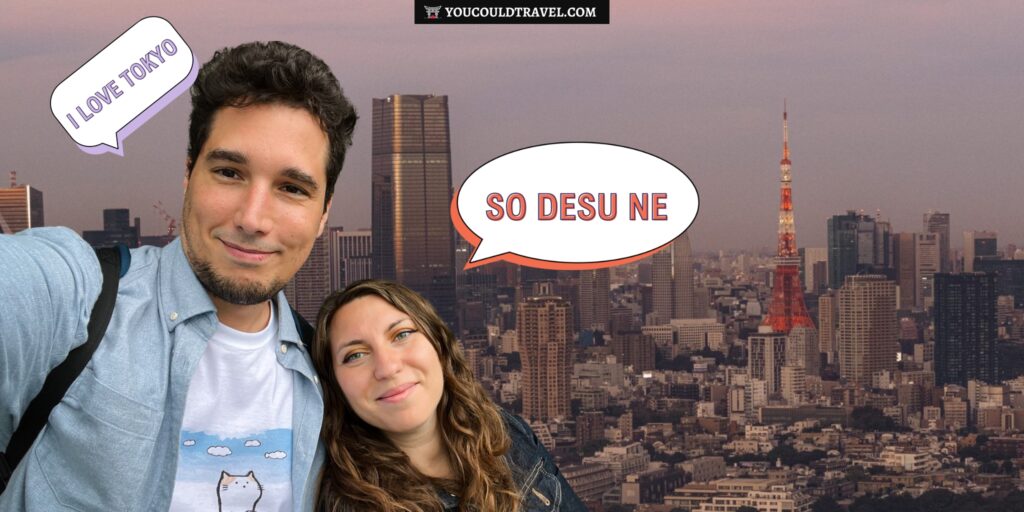
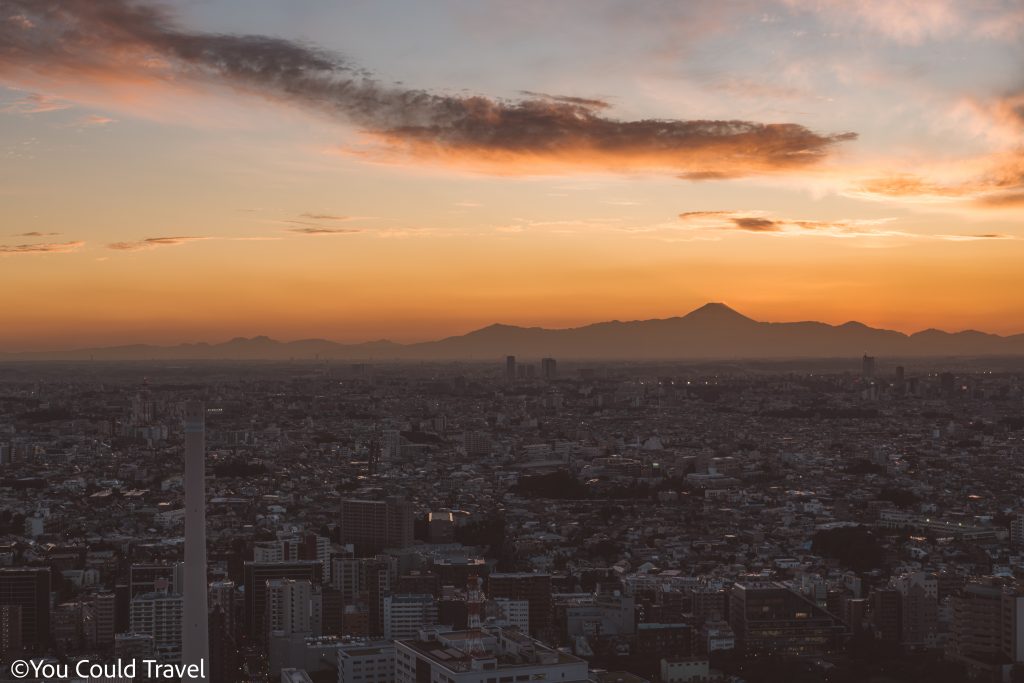
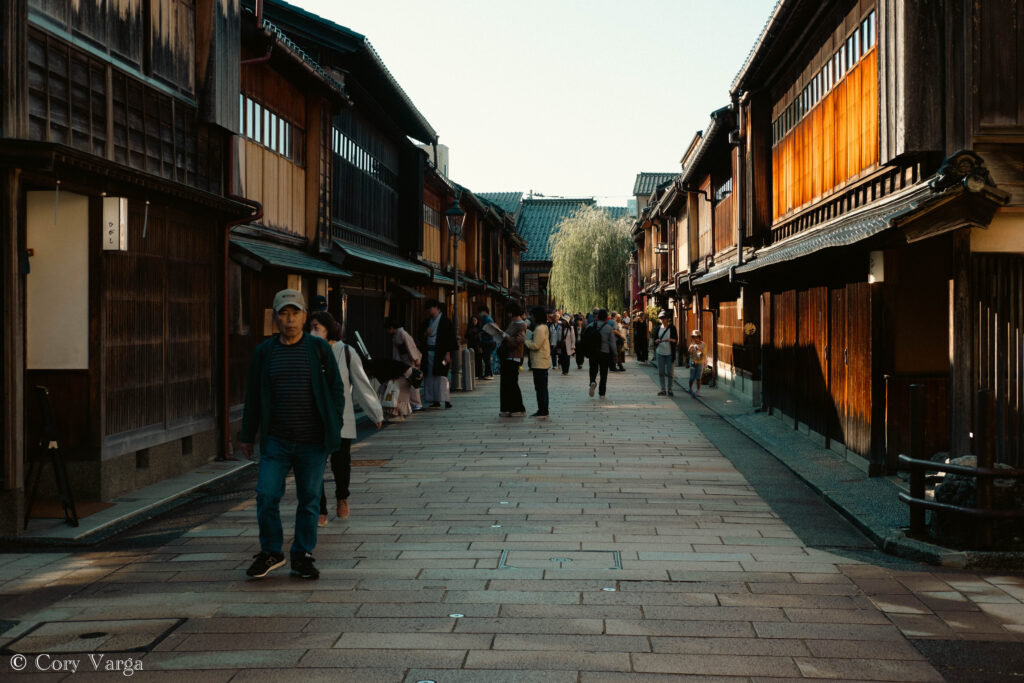
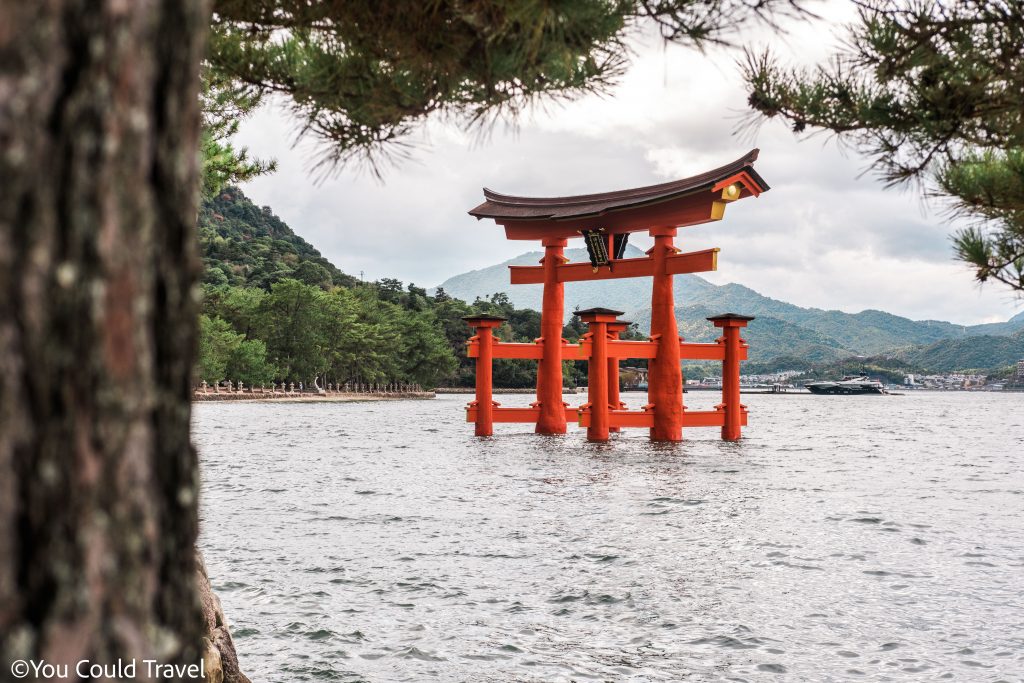


Leave a Reply